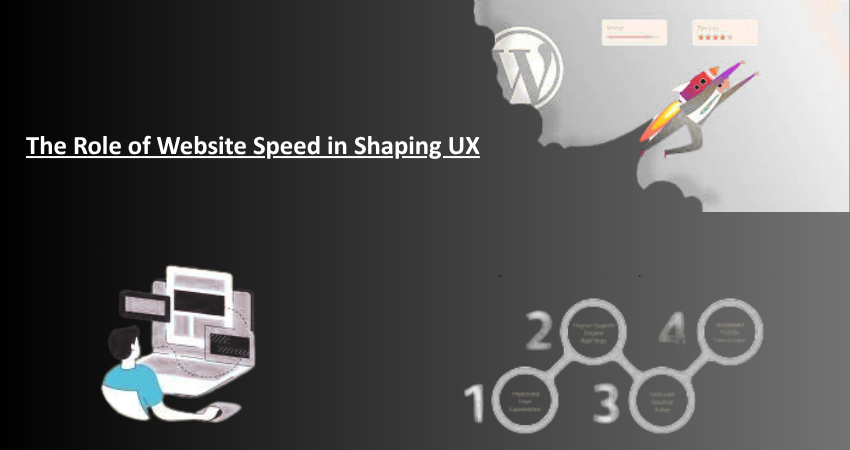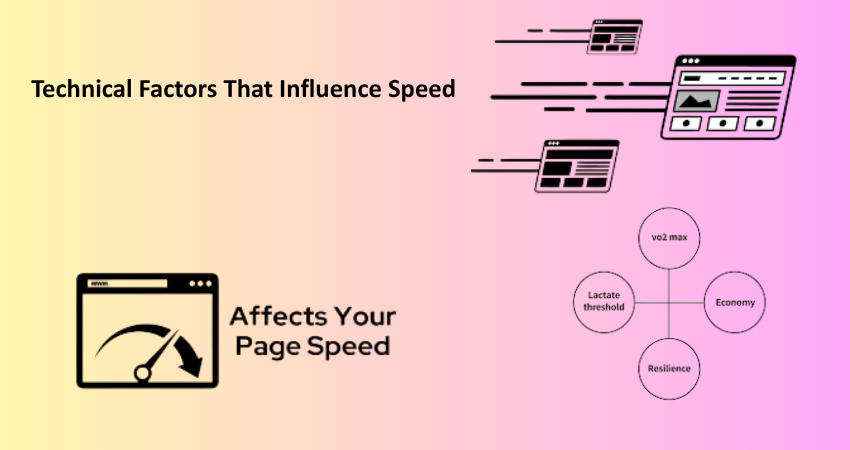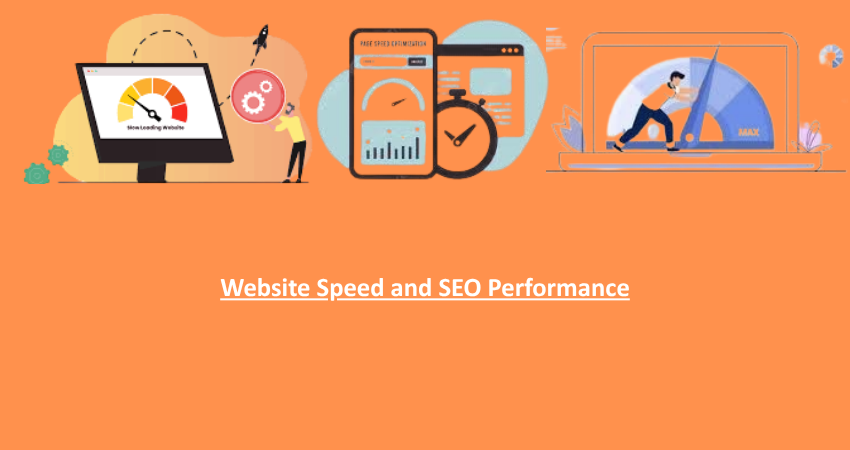
Introduction: Why Website Speed Is No Longer Optional
Website speed has a major impact on user experience in the digital market, where users are more demanding than ever. Shoppers have become addicted to fast and responsive interfaces for reading or clicking an application. Several studies have shown that just a one second delay in load time can reduce more than one third of conversions, page views, and customer satisfaction. It will not be only a matter of convenience but also a factor that determines user engagement: whether they stay or leave, engage or bounce, convert or abandon. Speed, then, shapes perception.
As businesses fight for attention in the saturated digital marketplace, a slow website can be a silent killer. Users often associate speed with reliability and professionalism. When a page loads instantly, it builds trust and reinforces the brand’s credibility; on the contrary, a sluggish site frustrates visitors, tarnishes brand image, and negatively affects SEO rankings. Speed is not just a technical concern; it is a strategic advantage. Herein, we shall look at the many aspects that website speed represents and how it works to directly define user experience-from engagement to usability, mobile performance, and SEO impact.
The Psychology Behind Speed and User Expectations
Instant Gratification and Cognitive Load
As modern-day internet users are lulled to instant gratification, this psychological principle, at the same time, identifies itself with an absolutely clear desire for experiencing or receiving the pleasure immediately. When a link is clicked on, the expectation is to have the answer in seconds or, later, wait a lifetime for it. Devices and networks of today’s time are only advanced by the services themselves like Google and Amazon, which set the definition standards of the much of the world by the word ‘fast.’ As a result, slow pages are intolerable and, at the same time, produce cognitive friction breaking the flow of interaction, resulting in users’ frustrations.
But speed, of course, is important for the entire user journey. Pages that load quickly enable users to search and navigate through a site without stopping or taking a pause to catch their breath. Take, for example, completing a task-the checkout experience on an e-commerce site or a form on a landing page; that speed somehow increases the perceived usability and responsiveness of the interface, resulting in better satisfaction ratings and reviews, but it also makes customers stickier. For startups and small businesses, it can be a competitive advantage. For large enterprises, it is a brand imperative. In both cases, speed optimization is not an option-it is foundational to user-centric design success. Just another thing-greatly minimizing the time a web page takes to load would be a surefire way to boost everything mentioned above.
The Impact on User Behavior and Conversions
As speed is related to the change in perception, so does its change with an individual’s behavior. Reports from studies indicate that a delay of about 100ms steers conversion rates dramatically. Such delays could affect thousands of dollars in sales daily for an e-commerce website. They just lose the customer as soon as they see slow page loads; almost never they give a second chance. Bounce rate increases, the time a user spends on the site decreases, and the number of pages open is lower per session-they are all signs that it is a negative user experience, all pointing signs to a lost user experience. Speed is, therefore, one of the quickest ways to eliminate friction in their path and instill interest in them.
Most importantly, speed pervades the entire user journey. A clearer pathway to greater exploration, more seamless transitions, and faster fulfillment speed comes with faster page loading. Be it checking out on an e-commerce site or filling in a form on a landing page, speed gives an impression of enhanced usability and responsiveness for the interface. Thus, speed results in an increase in satisfaction survey scores, the number of reviews, and loyalty. Tiny advantages go to small websites in fast-paced settings. Speed is a bare essential for the big guys. Speed optimization is no longer optional; it is the primary way into succeeding at user-centered design.
Technical Factors That Influence Speed

Server Response Time and Hosting Quality
Server learning which comprises all of the back-end infrastructure has a significant role to play in terms of website speed. Server response time is another factor; it is the time that takes a server to respond to a browser request. Even when the front is optimized, slow server response time makes the pages load slowly. Most of the cheap or share-hosting plans work like those: they slowdown performance when an appropriate number of users are using the system, making the entire experience of their usage a bottleneck to their requests. Since most speed improvements come from moving to higher-end, especially dedicated hosting plans, speed improvements can be drastic when many users send out requests for pages frequently.
Latency drops and speeds really get better through things like content delivery networks (CDNs) and edge computing-digital content delivered from the closest geolocation to the user. That works especially well for global audiences. There are other back-end improvements that speed up response times on the server-side, such as database indexing and caching mechanisms (for example: thinks like Redis, or Memcached), even lightweight server-side languages or frameworks add to the response times. Speed indeed begins on the server side. Without a capable technical base, front-end optimizations won’t reach their maximum effectiveness. Development and delivery of speed as well as smooth user experience can often begin with solid premium web hosting and infrastructure.
Front-End Optimization and Code Efficiency
On the one hand, the server architecture forms the backbone, and on the other, front-end optimization propels the site efficiently into the spotlight. Clumsy JavaScript files and hefty images, debilitating CSS, and scripts from third-party vendors can smash the speed of the pages down to a crawl; for example, minifying JavaScript, PNG, and JPEG files while webp format for images, becomes essential, just as lazy loading for below-the-fold content. Apart from this, using async loading for scripts and minimizing render-blocking resources will save some precious milliseconds off load time when it comes to visual stability.
Moreover, modern build systems like Webpack, Vite, and Parcel bundle-and-minify any assets for their proper delivery. Tree-shaking and removing unused code with critical focus of CSS (styles for the above-the-fold) will synergistically work with a high-speed loading strategy to even marginally improve perceived load times. Small contributions come from the front end—the lighter the font, the better it works, ease on system fonts, and minor tweaks to any animations—and greatly improve the UX. Thus, front-end optimization is concerned with loading content fast and responsively, never allowing the user to wait before interacting with the page.
Mobile Optimization: The Speed Imperative
Why Mobile Users Are Less Forgiving
Mobile browsing now accounts for more than half of global web traffic. Unlike desktop users, mobile users often rely on variable data connections and lower-powered devices. This makes them even more sensitive to speed issues. A page that loads in three seconds on desktop may take five or more on mobile—a delay that many users simply won’t tolerate. Google has recognized this shift and prioritizes mobile-first indexing, meaning that a site’s mobile performance can directly affect its visibility in search results. A fast mobile interface is now a must-have.
In mobile UX, speed is all about transferring kilobytes. Images, JavaScript, and poor implementation of responsive design can all slow things down. If users have to wait to load a site or experience lag gestures on their touch interface, a single second might be a frustration for many; there will be scenarios where instant availability becomes an absolute prerequisite, especially with e-commerce, where decisions are often made in seconds. Fast load times for mobile now should be seen as a basic requirement for usability, accessibility, and even fairness in developing areas, where users are mostly dependent on mobile internet.
Best Practices for Fast Mobile Performance
There are many ways to achieve fast performance on mobile. Responsive design must fluidly adapt to screen sizes of all types while being optimized for different device shapes and screen resolutions. Compression of assets specifically for mobile, reduction of HTTP requests, and use of AMP (Accelerated Mobile Pages) can all make an obvious difference for sites loaded with content. Add to this lazy loading of images and components, deferring off-screen content, and applying mobile-friendly fonts and layout structures, and you will have a slicker, faster mobile experience.
Progressive Web Apps (PWAs) are yet another useful tool for enhancing mobile optimization. They help to turn websites into native apps, equipping them with offline features, push notifications, and super-fast loading through service workers. Also, performance metrics such as Time to Interactive (TTI), First Contentful Paint (FCP), and Cumulative Layout Shift (CLS) should all be tracked and optimized with regards to mobile. As mobile performance is treated as a first-class citizen, it ensures sites are remaining on the top, competitive, inclusive, and friendly as the world most definitely develops into one that is mobile first.
Website Speed and SEO Performance

Google’s Core Web Vitals and Ranking Signals
Speed is not just a user experience metric—it’s also a ranking factor. Google’s Core Web Vitals—Largest Contentful Paint (LCP), First Input Delay (FID), and Cumulative Layout Shift (CLS)—are performance metrics that directly influence SEO. A slow-loading page is likely to rank lower in search engine results, reducing visibility and organic traffic. Google’s algorithm updates increasingly favor sites that deliver fast, stable, and engaging experiences, especially on mobile devices. This makes speed optimization a dual-purpose effort—enhancing both UX and discoverability.
What’s more, bounce rate, dwell time, and page interaction levels are indirectly influenced by speed and are believed to affect search rankings as well. If users consistently leave your site after waiting too long, search engines interpret that as a poor user experience. This can lead to a drop in rankings, regardless of how well your content is written. For this reason, optimizing your site for speed is no longer just a developer’s job—it’s a key component of any comprehensive SEO strategy. From faster crawling to better indexing, speed helps your content get discovered and appreciated.
Balancing Design Aesthetics with Speed Requirements
Many think that speed and aesthetics can’t coexist; this is, however, not the case. The finest sites are beautiful while also running fast. Here is where designers and developers must collaborate to ensure that both styles and speed exist in their experiences: the use of optimized images, limited animations, and picking design pieces that are easy to download. Some layouts are complicated, full of media, and decorated, which are contrary to enhancing performance—especially in mobile.
Tools, together with design systems or component libraries like Tailwind CSS or Material UI, are geared toward high performance, with pre-optimized styles and structures. Imposing user experience (UX) design does not rule out creativity; rather it urges the designer to consider how his visual cues affect speed and interaction with the user. A clean, minimal, performance-driven design is usually more potent than a gaudier design that takes up all of the system’s resources. In the end, the balance between aesthetics and speed provides seamless and enjoyable experiences that win users over and boost rankings and ROI.
Monitoring and Continuous Speed Optimization
Tools for Measuring Performance
You can never improve unless you first measure. Performance monitoring tools, like Google PageSpeed Insights, Lighthouse, WebPageTest, and GTmetrix-that, provide actionable insight on how your site loads and works for various devices and conditions. These capture equal parts laboratory and field data such as Time to First Byte (TTFB), LCP, FID, and recommendations for improvement. If you do it regularly, it will also help you find any bottlenecks, regressions, or issues that could severely impact real users and may not be obvious during the course of development.
It is vital, too, to have integrated performance monitoring within your deployment pipeline. It is possible to rely on tools like New Relic, Datadog, and Sentry to alert you of performance issues happening in production environments and enable action before most users are impacted. Analytic tools like Hotjar and FullStory help monitor user behavior and give insight into areas where a delay or even more is affecting the user journey. This proactive measurement makes sure that your speed optimization efforts continue to be real-world-aligned concerns.
Making Speed a Teamwide Responsibility
Speed optimization should not only be a task for developers but should also include designers, developers, marketers, and product managers-cross-functional teamwork, one may say. Anyone working with a website in its realization and maintenance should know about the performance implications of various decisions. For example, high page slowness results from marketers uploading large, uncompressed images; designers encourage considerations about some of the major performance-heavy fonts; and developers increase their solution by saturation with libraries, which then increases the size of the bundles.
Cultural performance would be created through responsibility and education. Teams need to be imbued to think about performance in terms of user effect, with relevant tools and skills training to apply it. The next steps are setting up performance budgets, setting fundamental benchmarks, and embedding speed checks in the development workflow. Sooner or later, as all start to think of speed in equal measures as they do beauty or features, the site will run really well for the user and will be highly productive.
Conclusion: Speed as a Cornerstone of Modern UX
Website speeds are no longer a technical detail; they are a major pillar of user experience. The loading time of your website really affects user behavior and perception, how it converts, and how it influences SEO, thus involving all these facets in user-brand interaction and perception. Today, in the digital space, a fast-responsive-seamless experience has ceased to be a practice but has become a dogma.
Not only does speed set the stage for great user experiences, but it also allows teams to create a strong psychological, technical, and strategic basis. Given an augmenting toolchain, applicable practices, and a certain attitude, speed optimization can become a continuously ongoing issue where all stakeholders cooperate together for the benefit of users and businesses alike. Surely, a fast website does not simply mean better for performance-it basically means better for people.